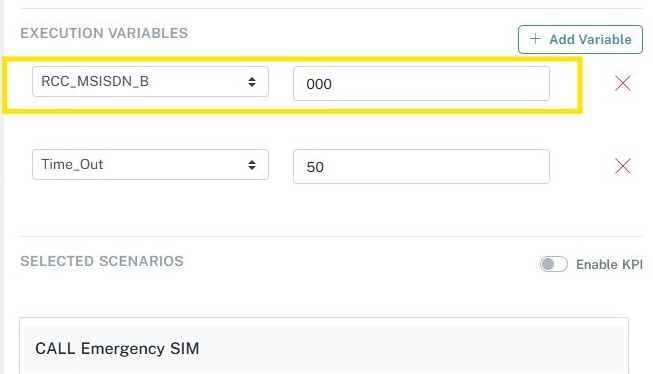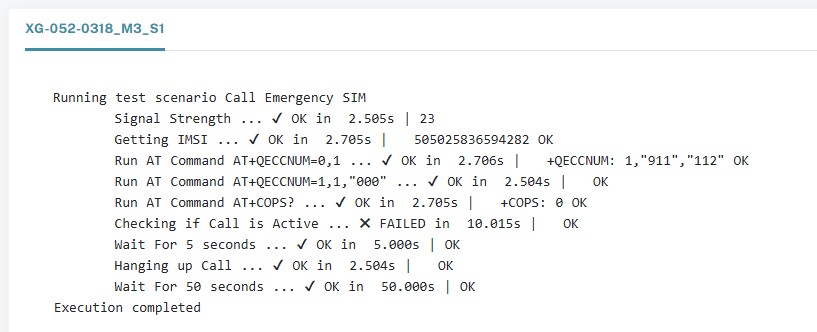Emergency Calling – What? Why? How? and Testing with XGP
What is Emergency Calling?
Emergency calling allows a mobile device to make a call to emergency services (e.g., 112, 911), even without a valid SIM card, or when the SIM is not registered to the network. This is a regulatory requirement in most countries and is supported by all GSM/UMTS/LTE networks.
Why Emergency Calling is Important?
Emergency calling systems are designed to be robust and universally accessible. However, critical incidents have occurred where these systems failed, leading to severe consequences.
For example, during a major outage hundreds of emergency calls (000/911/119/999) might be lost, even resulting in fatalities. Due to this reason, emergency call services provided by a mobile network has to be maintained with high service level and frequent validation.
Why is Testing Crucial?
Common failures include technical faults during routine upgrades, which may go undetected due to insufficient testing and lack of proper failover systems. Emergency call infrastructure is separately managed and regulated, and failures can violate obligations under the Telecommunications (Emergency Call Service) Determination 2019.
How does Emergency Calling Work?
As mentioned above, emergency calling is designed to work without/with a (U)SIM. There are two kinds of ECC (Emergency Call Code) numbers: ECC numbers without (U)SIM and ECC numbers with (U)SIM. The default ECC numbers without (U)SIM are 911, 112, 00, 08, 110, 999, 118 and 119. The default ECC number with (U)SIM is 911 and 112.
Call Flow
Without a (U)SIM or with an Invalid (U)SIM
- The device scans for any available network, regardless of operator.
- It attaches to the strongest cell tower that allows emergency calls.
- The call is flagged as emergency-only, and the network permits it even though the device is not authenticated.
With a (U)SIM
- The device uses its own network or a roaming partner to initiate the emergency call.
- The call is routed through the standard call flow but flagged as emergency-only.
- The network prioritizes this call and routes it to the Public Safety Answering Point (PSAP).
GSM/UMTS/LTE Emergency Call Flow
- User Action: Emergency number dialed via UI or AT command (e.g., 112).
- Call Setup Triggered
- Channel Request: Device sends request with emergency indication.
- Network Accepts Call: Even without authentication.
- LTE Specific:
- If VoLTE supported → IMS
- If not → CS fallback to GSM/UMTS
- MSC Routing: Routes to nearest PSAP.
- Voice Path: TCH (Traffic Channel) allocated.
Testing with XGP
XGP is a powerful, integrated platform combining software intelligence with built-in RF GSM radios, designed to automate and simplify telecom testing. It supports GSM/UMTS/LTE/5G and interacts directly with live networks.
Full Automation
Automated test execution eliminates manual dialing, logging, and monitoring. Tests can be scheduled:
- Multiple times daily (sanity checks)
- After network upgrades or firmware changes
- On-demand (client-defined triggers)
Example: Emergency Call Testing – With (U)SIM
- Create a new execution with a configurable RCC.

- Read signal strength and IMSI of the (U)SIM.
- Check existing RCC configuration; add if missing.
- Make the call and hang up after a few seconds.
Note: In this scenario, the actual dialing step of the emergency call was intentionally skipped, as executing live calls to a PSAP (Public Safety Answering Point) in a production environment is not advisable without prior coordination.

Testing in Production Environment
Emergency calls route through any available network, regardless of SIM status. Recommended precautions:
Controlled RF Environment (Faraday Cage)
Deploy the device inside a Faraday cage or RF-shielded enclosure that allows selective signal to be injected. This setup ensures the device only receives signals from a specific operator, enabling controlled testing without interference from other networks.
Operator & PSAP Coordination
The mobile network operator or the associated PSAP must provide access to a test Routing Control Center (RCC) or a designated emergency call test endpoint. This allows emergency call flows to be validated without reaching live emergency dispatch systems.
The Business Impact
Emergency calling is a lifesaving capability, not just a regulatory checkbox.
- Public Safety Assurance: Ensures users can reach emergency services.
- Regulatory Compliance: Meets national/international mandates.
- Brand Trust: Prevents reputational damage from failed calls.
The Engineering Challenge
Key questions for engineers and QA teams:
- Are you manually triggering emergency calls and logging results?
- Can you simulate With SIM and Without SIM emergency scenarios across multiple networks?
- Are you validating fallback mechanisms?
- Do you manually configure RCC if it’s not existing?
Manual testing is slow and error-prone. Automation is essential.
Let’s Talk
What challenges are you facing with emergency call testing? Have failures occurred that could’ve been caught with better automation?
Let’s discuss how XGP can help you validate emergency calling with confidence and prepare your network for the future of public safety communications.
